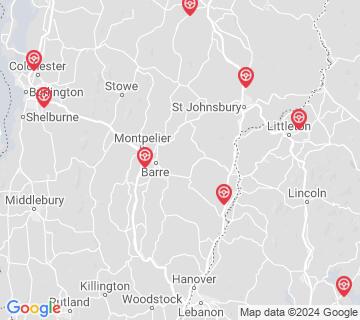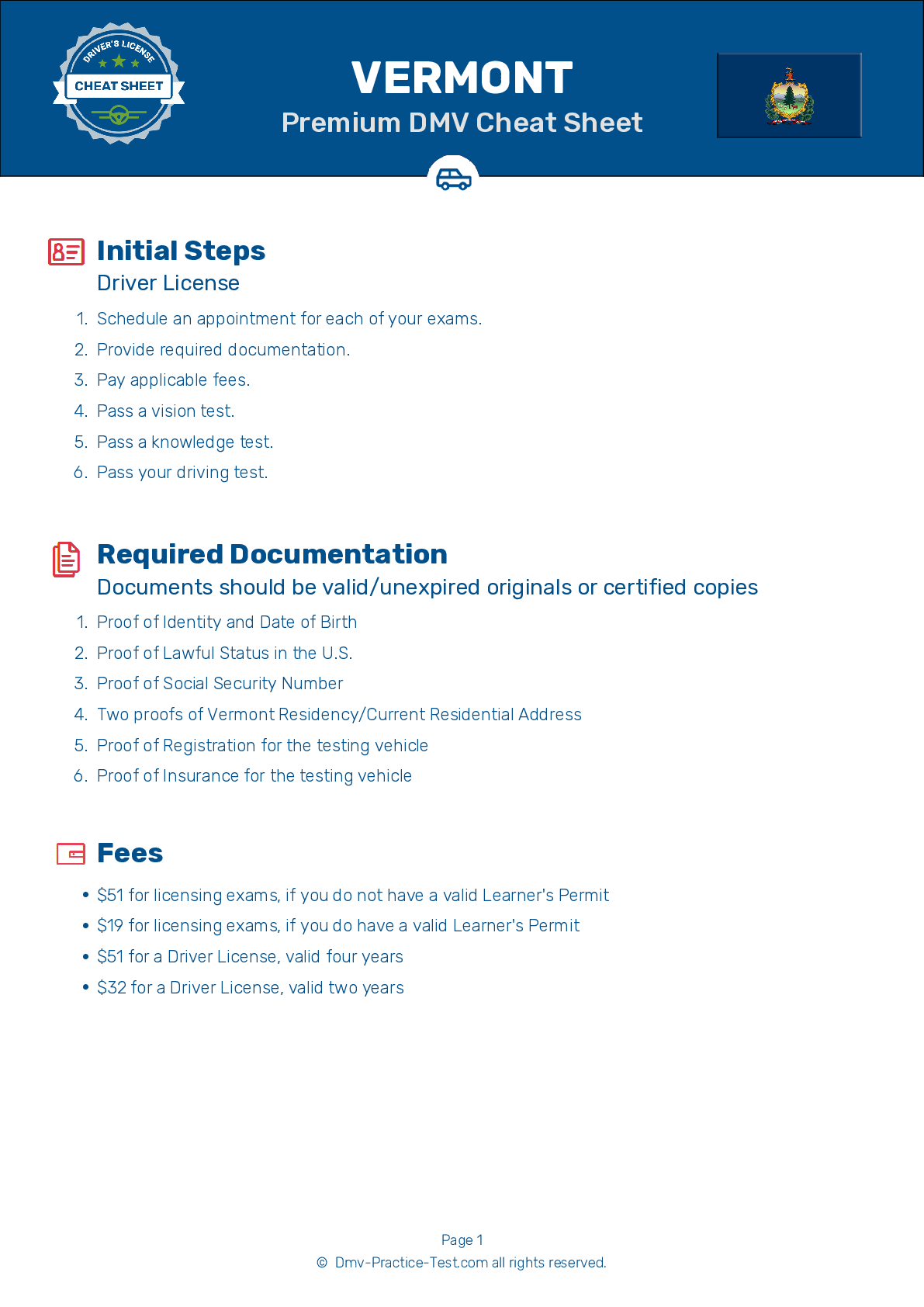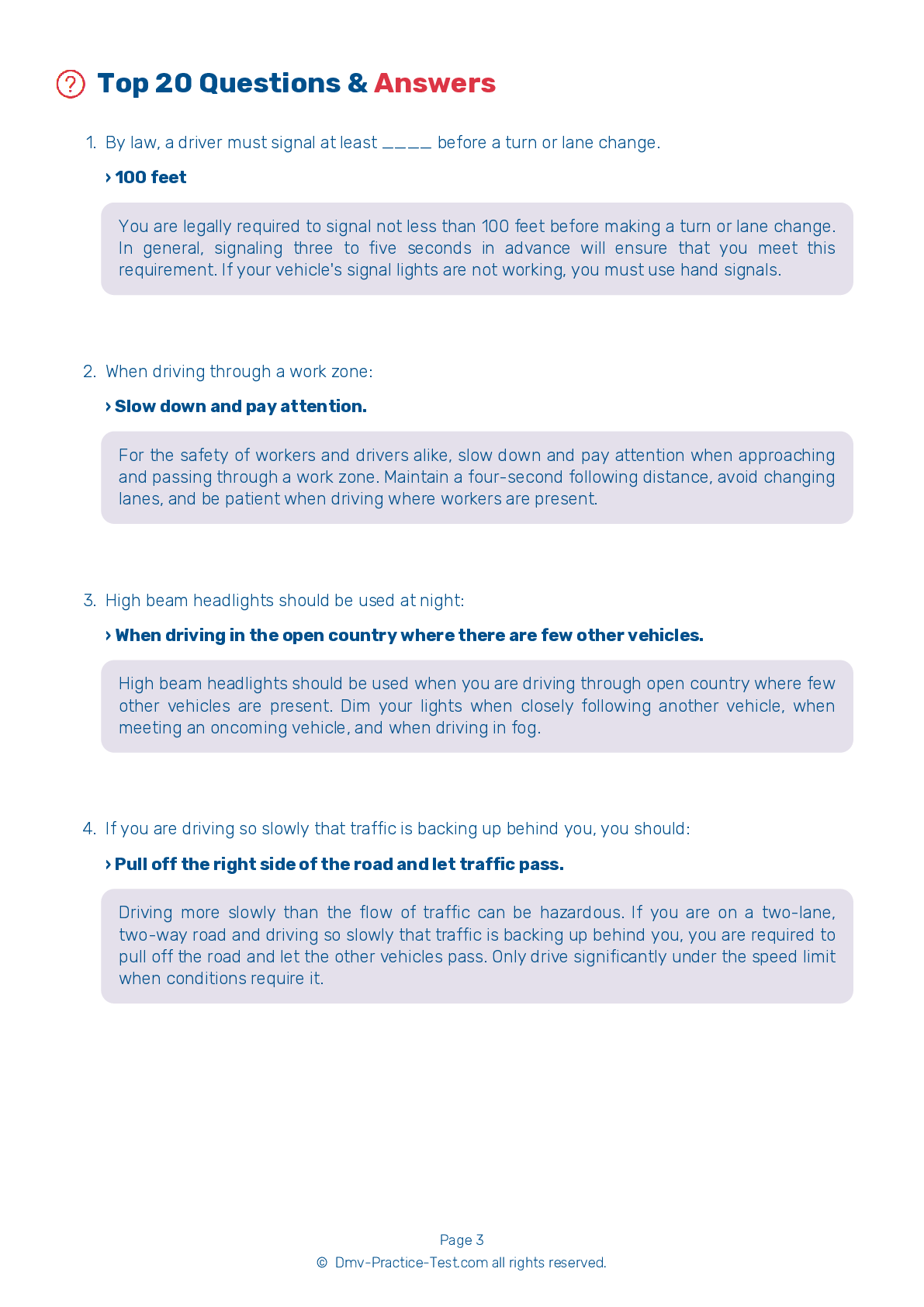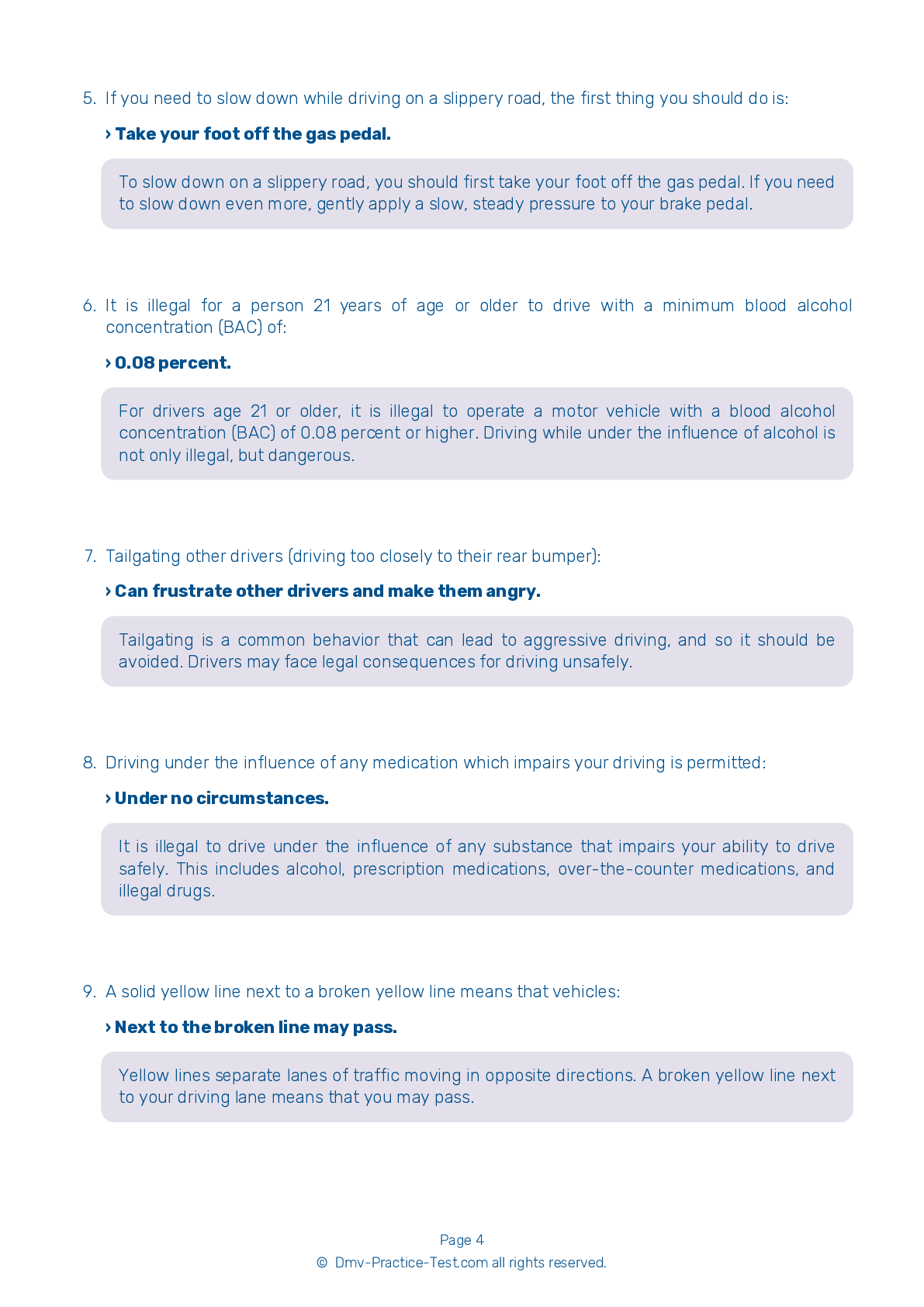FREE Vermont DMV Practice Test #21 Page 2 of 3
The Vermont DMV practise examinations have been updated for January 2025. It includes questions based on the Vermont Driver Handbook's most significant traffic signals and legislation for 2025. Use actual questions that are very similar (often identical!) to the DMV driving permit test and driver's licence exam to study for the DMV driving permit test and driver's licence exam.
On the practise exam, each question gets a tip and explanation to help you remember the concepts. The written component of the official Vermont DMV test will include questions about traffic rules, traffic signs, and driving statutes, as well as knowledge from the Driver Handbook.
To obtain a passing grade, you must correctly answer 16 of the 20 questions. Use the practise exam provided by the Vermont Department of Motor Vehicles to help you prepare for your instruction permit or driver's licence.
The DMV exam is available in several languages.
Using any kind of testing assistance will result in an automatic fail, and the DMV may take additional action against your driver's licence, so stay away from it.
7 . Before turning, you should:
To complete a turn safely, you should activate your turn signal three to four seconds before your turn.
8 . ____ greatly increase stopping distances and severity of crashes.
High speeds greatly increase stopping distances and severity of crashes. The faster you drive, the greater the impact or striking power of your vehicle, should you be involved in a collision.
9 . When approaching a railroad crossing warning sign:
Railroad crossing warning signs are used to warn drivers of the possibility of a train. Drivers should obey all railroad crossing warning signs and never go around barriers or disregard the warning sign.
10 . A solid white line on the right edge of the highway slants in to the left. That shows that:
A solid line along the side of the road indicates where its edge is, marking the boundary between the travel lane and the shoulder. If the edge line angles toward the center of the road, this means that the road is narrower ahead.
11 . What may help drivers conserve gasoline?
Every time you have to stop quickly, it takes time and fuel to accelerate and get your vehicle back up to the speed of traffic. Drivers who look far ahead of their vehicles can slow down gradually or change lanes to avoid unnecessary braking, leading to better gas mileage.
12 . If you are involved in a serious motor vehicle crash:
If you are involved in a crash, move your vehicle off of the road and stop, if possible. If anyone is injured, call 911 and provide appropriate help. You must report the crash to law enforcement if there is an injury, a death, and/or more than $1,000 in property damage (or more than $200 worth of damage made to non-vehicle government property, such as signs or guardrails).
13 . When driving to an unfamiliar area, you:
When driving to an unfamiliar area, plan your trip in advance. Don’t start with only a hazy idea of where you are going. If your destination is in an unfamiliar area, check the location on a map before you start to drive.
Search the best driving school in your neighbourhood
2025 Vermont | Frequently Asked Questions
1. Not checking mirrors and blind spots before changing lanes or turning.
2. Speeding or driving too slowly for the conditions or posted speed limit.
3. Not coming to a complete stop at stop signs or red lights.
4. Incorrect signalling or not signalling at all.
5. Poor parking, especially parallel parking.
Remember, practice makes perfect, so take time to hone your skills.




